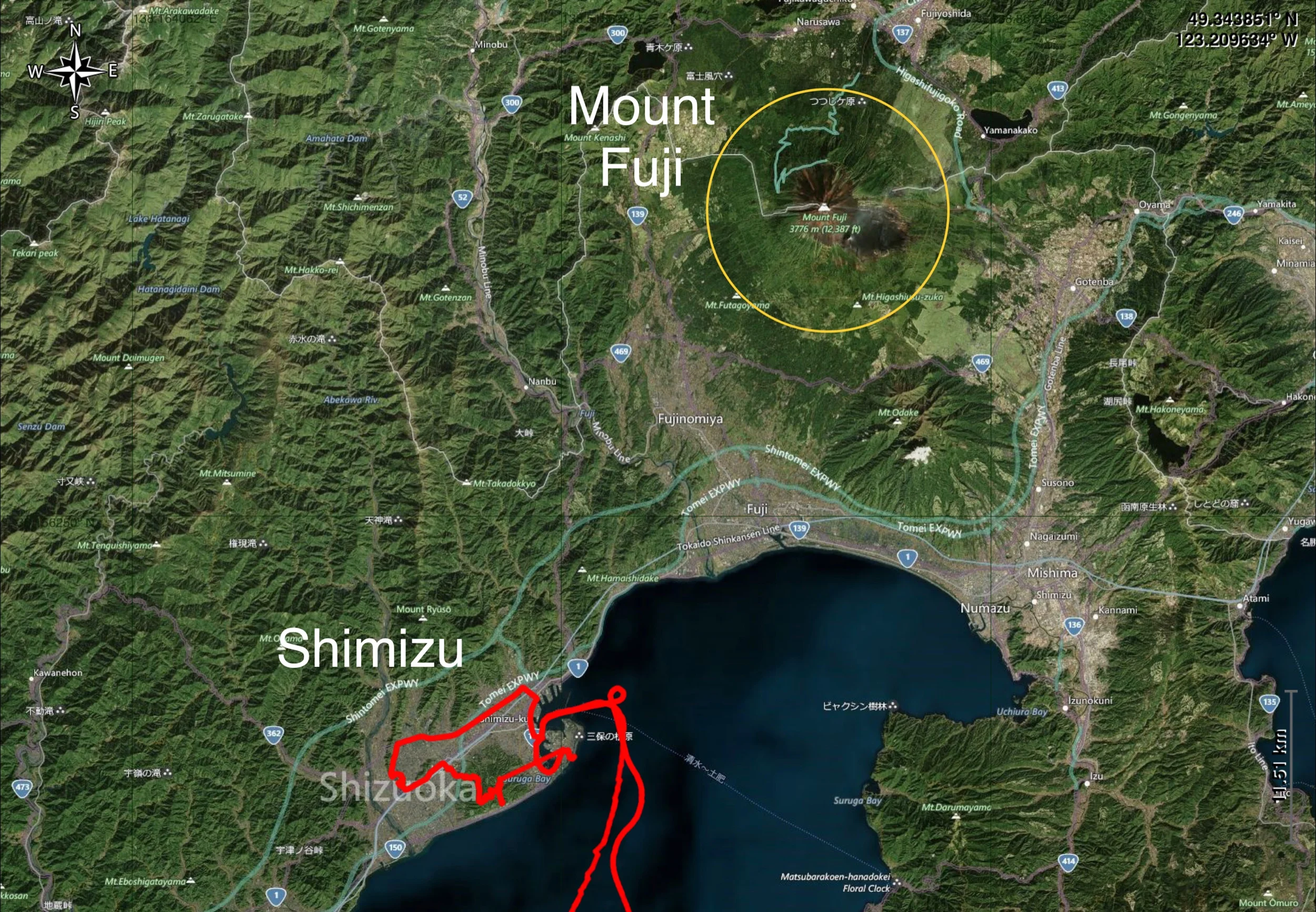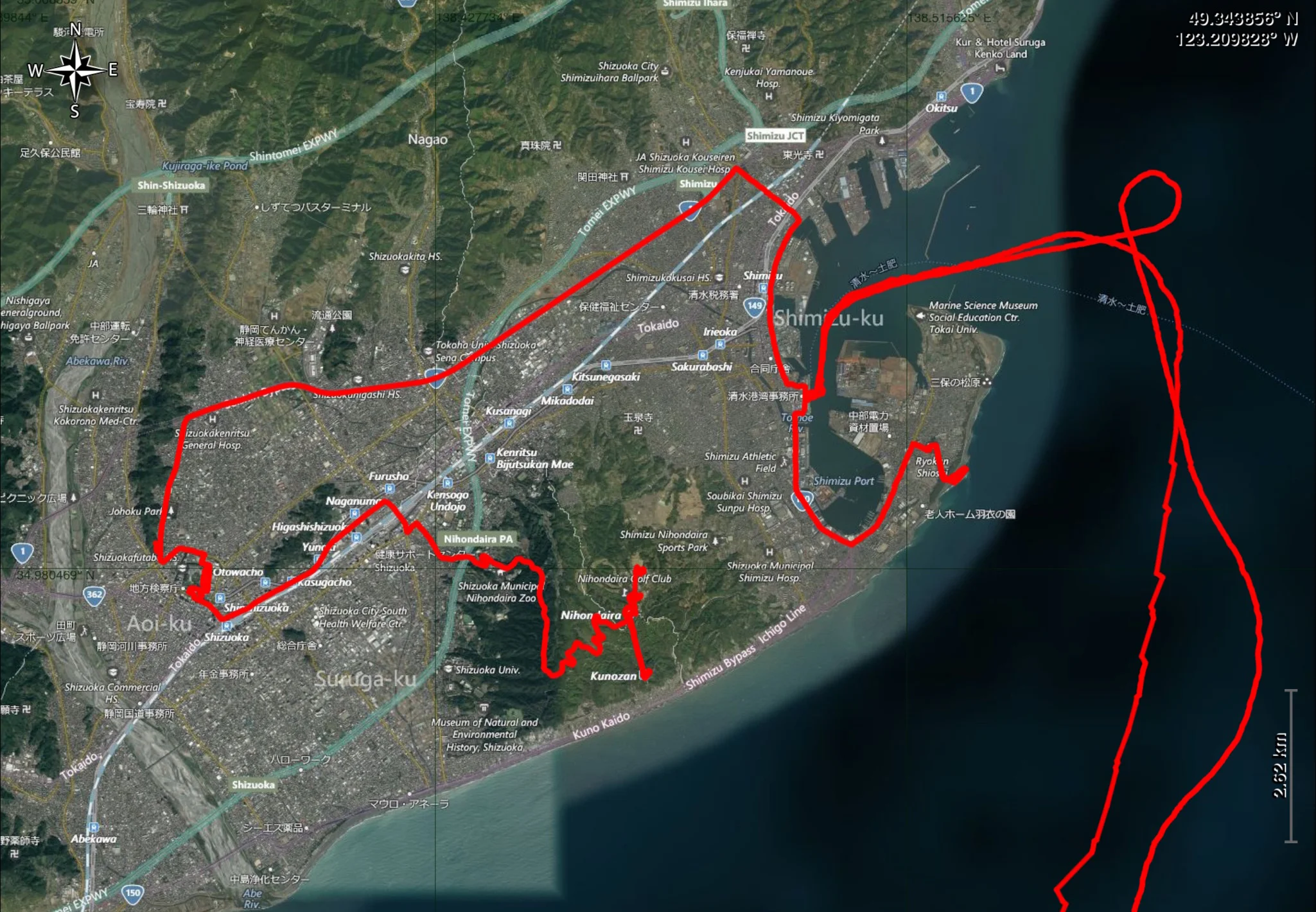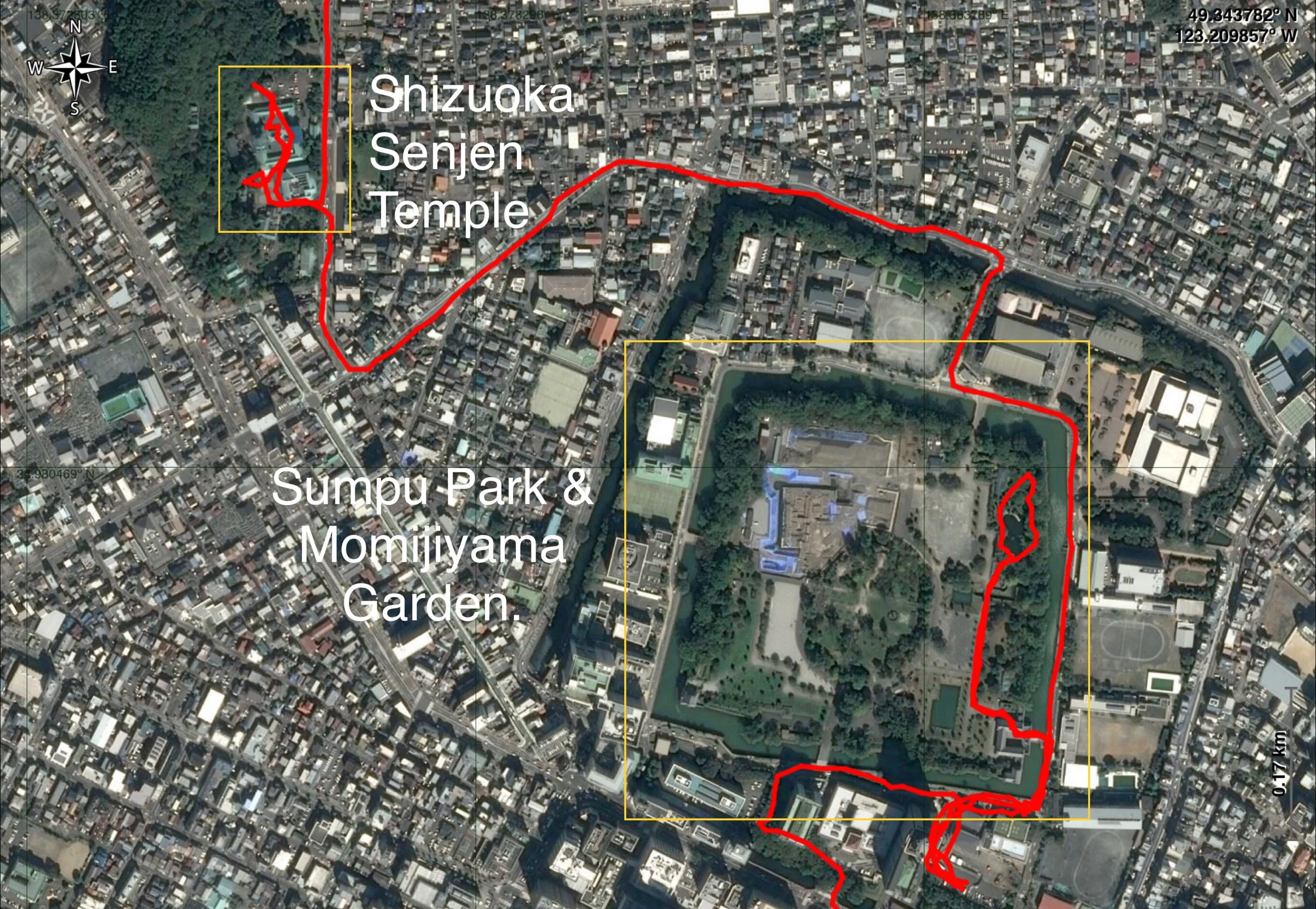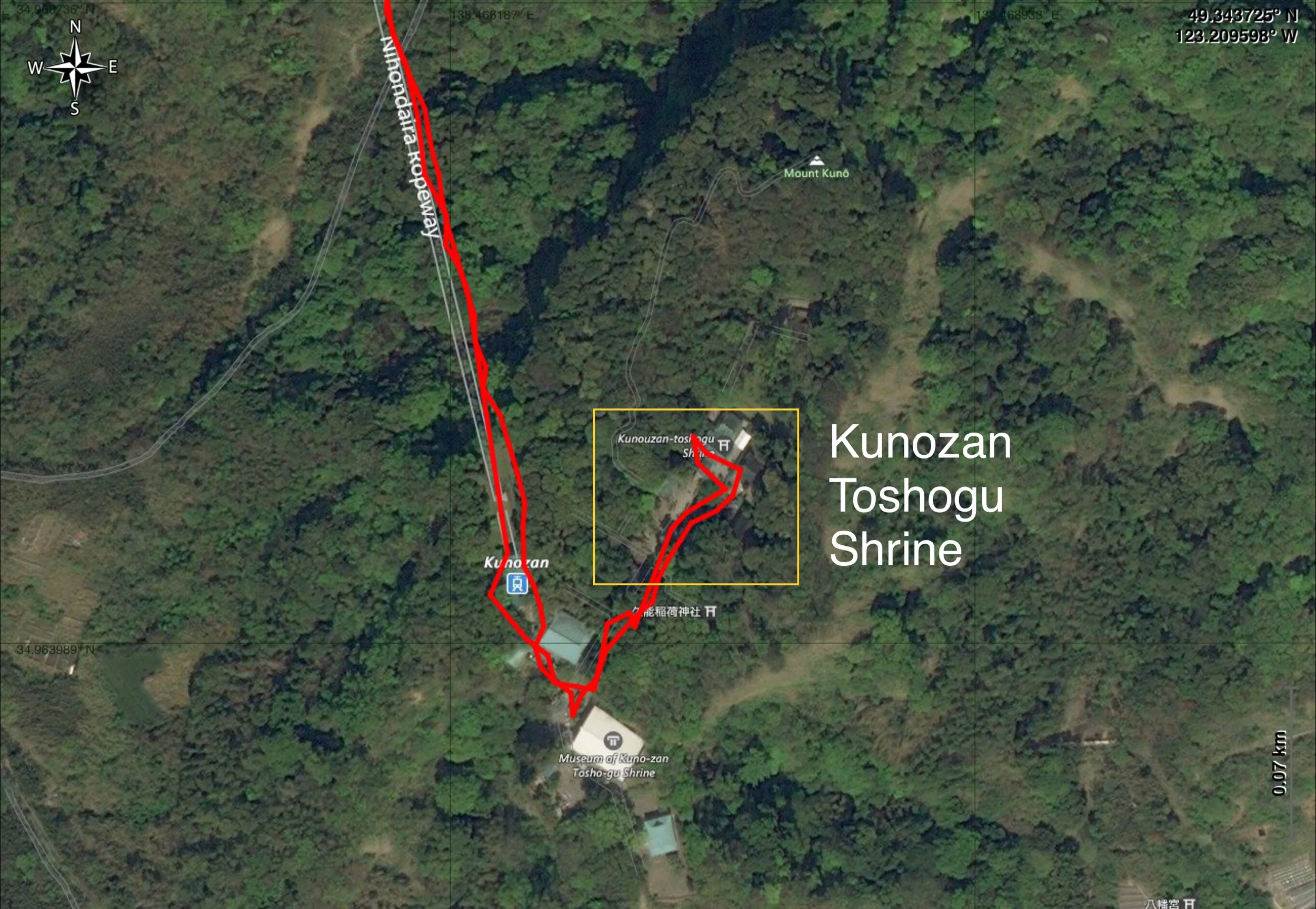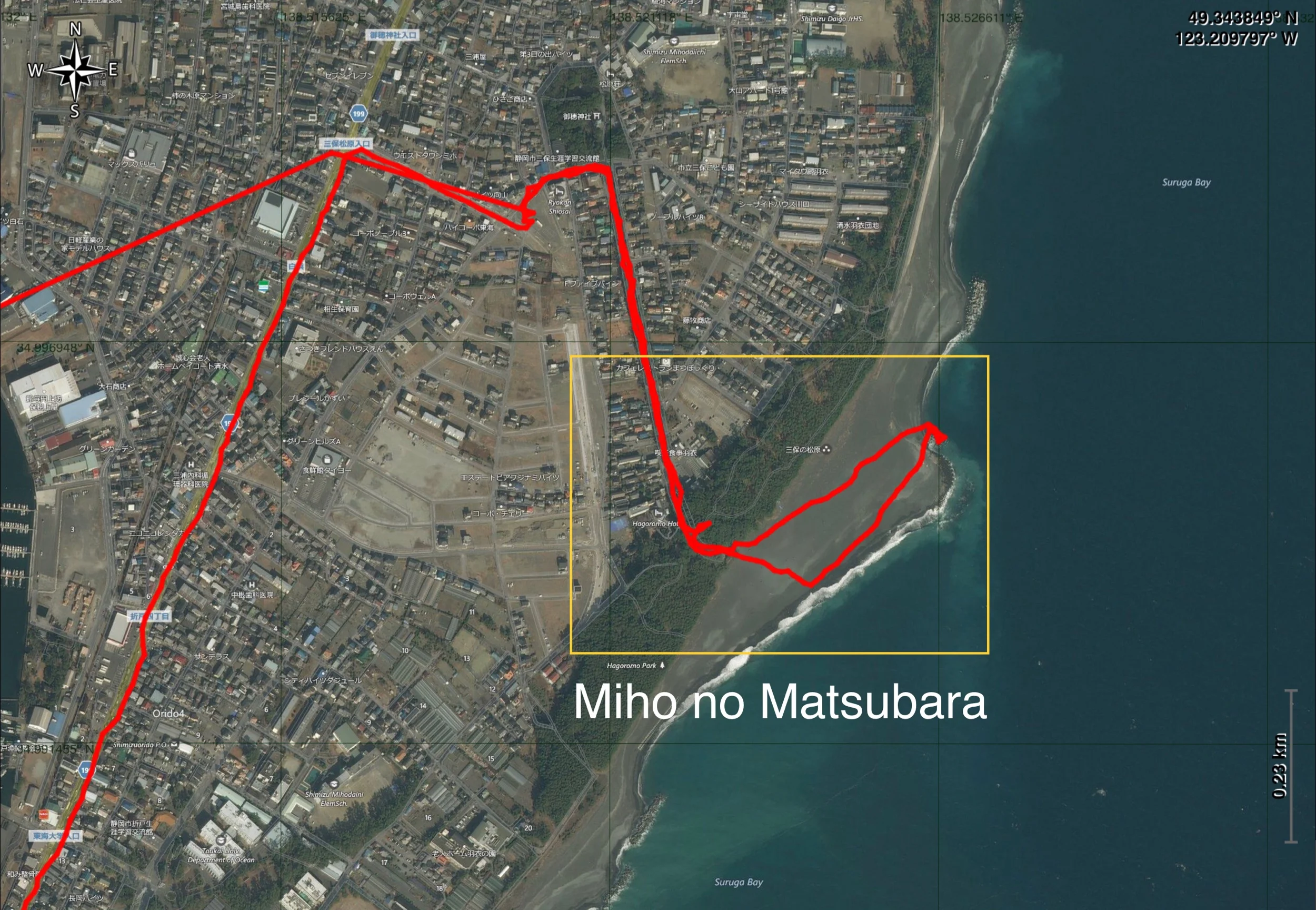Shimizu, Shizuoka Prefecture & Mt. Fuji
May 10, 2019
ARRIVAL IN SHIMIZU
Our arrival in Shimizu was perhaps one of our more anticipated stops, as this was where we would finally get to see Mount Fuji. Sure we’ve seen hundreds of photos of it in magazines, books, online and TV. But this would be different, something special to be a highlight of this whole Japan circumnavigation. Alas, it would more aptly be described as a big let down. In fact, the best view we had of Mt. Fuji was when we were entering the port at 7:00am. It was just then that we were passing Mt. Fuji, and were lucky enough to have it visible from our side of the ship, that I was able to snap some photos from the balcony of our stateroom while still in my pyjamas. It was a good thing I did, as this would be the best view for the whole day.
One of two decent shots of Mt. Fuji taken before we even docked the ship. The ship is a giant liquified natural gas bulk carrier.
Now Shimizu is in itself a favourite stop for cruise ships, and for more reasons than just having a view of the famous mountain. It’s a cultural centre as well, with many attractions that draw visitors from all over the world. But Mt. Fuji aside, it is these other attractions that would occupy the bulk of our time this day.






Shizuoka Senjen Shrine
The Shizuoka Senjen Shrine is actually made up of three shrines. Kambe Shrine, Sengen Shrine (two shrines in the same building) and Otoshimioya Shrine collectively are known as Shizuoka Senjen Shrine.
Although the original formation of the shrine is unknown, people have populated this area going back to pre-historic times. Kambe Shrine is believed to date back to 97 BC to 30 BC. Unsubstantiated legend has the formation of the Otoshimioya Shrine being dated to 270AD to 310AD, and Senjen Shrine was officially established in 901 when requested so by Emperor Daigo.
Something we didn’t expect to see in a shrine was an archery dojo, especially one like this that moves on rails to change the distance to the target backstop.
All three shrines are held in high regard and have received the patronage of many powerful clans over the years. The 3rd shogun, Tokugawa Iemitsu, granted the shrine land and an income for its upkeep. Sadly, the shrine was burned down in 1804 as a result of a war, but was rebuilt over the next 60 years into its present flamboyant style. Twenty-six structures within the shrine complex are protected by the government as Important Cultural Properties.


















SUMPU CASTLE PARK & MOMIJIYAMA GARDEN
Considering these structures were built over 400 years ago, you can’t but be impressed with the workmanship, especially of the rock work.
Sumpu Castle Park is located in the grounds of the former Sumpu Castle. The castle was build in 1585 and was the home of the renown shogun Tokugawa Ieyasu in his later years early in the 17th century. After his death the castle was mostly destroyed by fire in 1635, and only parts of it were rebuilt. After a period spent as a home to the 34th Infantry Regiment, and use by various government offices and schools, the area was turned into a public park to serve more as a place of rest and relaxation for the citizens of the area.
School children were using the recreation area in some form of organized activity.
Although our visit to this place was fairly short, it was still long enough for us to get a good look at the outside of the remaining section of the castle and its moat. Then it was just a matter of a brisk walk over the wooden bridge and through the more recreational section of the park. Once past this we were able to enter the more densely foliated, and structured garden area that locals visit for peaceful contemplation. We even had the honour of seeing a couple in their wedding attire, after the ceremony was long over.



























Kunozan Toshogu Shrine
These shrines seem to have many different individual structures. Unfortunately there was nothing to tell us what one was versus another. The shrine billboards were only in Japanese script.
This shrine was dedicated to Tokugawa Ieyasu, a famous leader (1543-1616) who brought a long period of civil wars in Japan to an end, and finally unified all of the country.
Access to the shrine was originally obtained by climbing up the mountain by means of a merciless zig-zag path with over 1000 stone steps. Although the hike provides beautiful views of Suruga Bay below, modern day visitors who would prefer easier access can do so by using a ropeway that reaches the shrine from the north side of the mountain. We elected for this northern approach instead.
For all we know, this could have been the shrine’s bar. It seemed to have a bunch of the sake barrels stacked in front of it.
The shrine is extensive and consists of a number of bright red buildings. It also has a museum which displays some of Tokugawa Ieyasu’s possessions, armour and weapons. Further in behind the shrine is the mausoleum that Ieyasu requested, since he spent his last years at the nearby Sumpu Castle.










































Miho No Matsubara
The trees had amazing shapes to the branches. We don’t know if this natural or if it was created the same way miniature bonsai trees are sculpted.
Miho-no-Matsubara Pine Grove is regarded as one of the “three new views of Japan” and is a seven kilometre stretch of sandy coastline that hosts over 54,000 pine trees on the shores of Suruga Bay, in Shizuoka City.
The area is famous for the Hagoromo-no-Matsu, which is a folktale about a celestial angel that descended to earth to go for a swim in the bay, and hung her Hagoromo feathered kimono on a tree branch. It is said that a local fisherman found the kimono and refused to give it back to her until she danced for him. Claiming that she needed the garment in order to dance, the fisherman returned it to her where she subsequently danced for him before she ascended back into the heavens.
What was so nice about this place during our visit was the distinct lack of crowds. Only a few fishermen trying their luck.
Our visit to this historic site is only one of thousands over the years, often by artists from all over Japan, as well as others the world over who want to paint or otherwise record the unique scene that includes views of Mt. Fuji. So important is this place for Japanese culture that in 2013 this amazing landscape was listed in the Unesco World Heritage records as a "sacred place and source of artistic inspiration."
Unfortunately for us, this remarkable place was left to be our last stop of the day. The result of this delay was that the heavy haze that comes with many cities in the region, had built to such a degree that we could hardly see the mountain. So the single most important reason for us to visit this place, seeing Mt. Fuji, was ruined because the tour guide thought we would find visiting our 20th+ shrine/temple of the trip more important than seeing one of the most iconic and beautiful natural creations on Mother Earth. Still, the pine forest and beach topography was beautiful, and it was easy to see how artists and poets could find inspiration here.
















Random Photos
Here are some random shots from the day’s travel.











